The 3'-phosphoadenosine 5'-phosphosulfate transporters, PAPST1 and 2, contribute to the maintenance and differentiation of mouse embryonic stem cells
- PMID: 20011239
- PMCID: PMC2788424
- DOI: 10.1371/journal.pone.0008262
The 3'-phosphoadenosine 5'-phosphosulfate transporters, PAPST1 and 2, contribute to the maintenance and differentiation of mouse embryonic stem cells
Abstract
Recently, we have identified two 3'-phosphoadenosine 5'-phosphosulfate (PAPS) transporters (PAPST1 and PAPST2), which contribute to PAPS transport into the Golgi, in both human and Drosophila. Mutation and RNA interference (RNAi) of the Drosophila PAPST have shown the importance of PAPST-dependent sulfation of carbohydrates and proteins during development. However, the functional roles of PAPST in mammals are largely unknown. Here, we investigated whether PAPST-dependent sulfation is involved in regulating signaling pathways required for the maintenance of mouse embryonic stem cells (mESCs), differentiation into the three germ layers, and neurogenesis. By using a yeast expression system, mouse PAPST1 and PAPST2 proteins were shown to have PAPS transport activity with an apparent K(m) value of 1.54 microM or 1.49 microM, respectively. RNAi-mediated knockdown of each PAPST induced the reduction of chondroitin sulfate (CS) chain sulfation as well as heparan sulfate (HS) chain sulfation, and inhibited mESC self-renewal due to defects in several signaling pathways. However, we suggest that these effects were due to reduced HS, not CS, chain sulfation, because knockdown of mouse N-deacetylase/N-sulfotransferase, which catalyzes the first step of HS sulfation, in mESCs gave similar results to those observed in PAPST-knockdown mESCs, but depletion of CS chains did not. On the other hand, during embryoid body formation, PAPST-knockdown mESCs exhibited abnormal differentiation, in particular neurogenesis was promoted, presumably due to the observed defects in BMP, FGF and Wnt signaling. The latter were reduced as a result of the reduction in both HS and CS chain sulfation. We propose that PAPST-dependent sulfation of HS or CS chains, which is regulated developmentally, regulates the extrinsic signaling required for the maintenance and normal differentiation of mESCs.
Conflict of interest statement
Figures
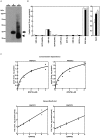
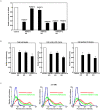
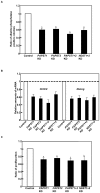
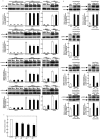
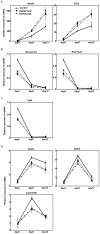


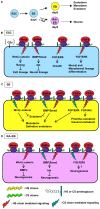
Similar articles
-
PAPST1 regulates sulfation of heparan sulfate proteoglycans in epithelial MDCK II cells.Glycobiology. 2015 Jan;25(1):30-41. doi: 10.1093/glycob/cwu084. Epub 2014 Aug 18. Glycobiology. 2015. PMID: 25138304
-
Molecular cloning and characterization of a novel 3'-phosphoadenosine 5'-phosphosulfate transporter, PAPST2.J Biol Chem. 2006 Apr 21;281(16):10945-53. doi: 10.1074/jbc.M508991200. Epub 2006 Feb 21. J Biol Chem. 2006. PMID: 16492677
-
Expression and the role of 3'-phosphoadenosine 5'-phosphosulfate transporters in human colorectal carcinoma.Glycobiology. 2011 Feb;21(2):235-46. doi: 10.1093/glycob/cwq154. Epub 2010 Oct 25. Glycobiology. 2011. PMID: 20978009
-
[Production and application of 3-phosphoadenosine-5- phosphosulfate].Sheng Wu Gong Cheng Xue Bao. 2019 Jul 25;35(7):1222-1233. doi: 10.13345/j.cjb.180527. Sheng Wu Gong Cheng Xue Bao. 2019. PMID: 31328479 Review. Chinese.
-
Sulfation and sulfotransferases 5: the importance of 3'-phosphoadenosine 5'-phosphosulfate (PAPS) in the regulation of sulfation.FASEB J. 1997 May;11(6):404-18. doi: 10.1096/fasebj.11.6.9194521. FASEB J. 1997. PMID: 9194521 Review.
Cited by
-
Pooled Screens Identify GPR108 and TM9SF2 as Host Cell Factors Critical for AAV Transduction.Mol Ther Methods Clin Dev. 2020 Mar 17;17:601-611. doi: 10.1016/j.omtm.2020.03.012. eCollection 2020 Jun 12. Mol Ther Methods Clin Dev. 2020. PMID: 32280726 Free PMC article.
-
Attachment of Chlamydia trachomatis L2 to host cells requires sulfation.Proc Natl Acad Sci U S A. 2012 Jun 19;109(25):10059-64. doi: 10.1073/pnas.1120244109. Epub 2012 Jun 6. Proc Natl Acad Sci U S A. 2012. PMID: 22675117 Free PMC article.
-
Differential genetic associations and expression of PAPST1/SLC35B2 in bipolar disorder and schizophrenia.J Neural Transm (Vienna). 2022 Jul;129(7):913-924. doi: 10.1007/s00702-022-02503-7. Epub 2022 May 2. J Neural Transm (Vienna). 2022. PMID: 35501530
-
Normal sulfation levels regulate spinal cord neural precursor cell proliferation and differentiation.Neural Dev. 2012 Jun 8;7:20. doi: 10.1186/1749-8104-7-20. Neural Dev. 2012. PMID: 22681904 Free PMC article.
-
Regulation of stem cell fate by HSPGs: implication in hair follicle cycling.NPJ Regen Med. 2022 Dec 28;7(1):77. doi: 10.1038/s41536-022-00267-y. NPJ Regen Med. 2022. PMID: 36577752 Free PMC article. Review.
References
-
- Evans MJ, Kaufman MH. Establishment in culture of pluripotential cells from mouse embryos. Nature. 1981;292:154–156. - PubMed
-
- Keller G. Embryonic stem cell differentiation: emergence of a new era in biology and medicine. Genes Dev. 2005;19:1129–1155. - PubMed
-
- Chambers I, Smith A. Self-renewal of teratocarcinoma and embryonic stem cells. Oncogene. 2004;23:7150–7160. - PubMed
-
- Ivanova N, Dobrin R, Lu R, Kotenko I, Levorse J, et al. Dissecting self-renewal in stem cells with RNA interference. Nature. 2006;442:533–538. - PubMed
Publication types
MeSH terms
Substances
LinkOut - more resources
Full Text Sources
Other Literature Sources
Molecular Biology Databases

